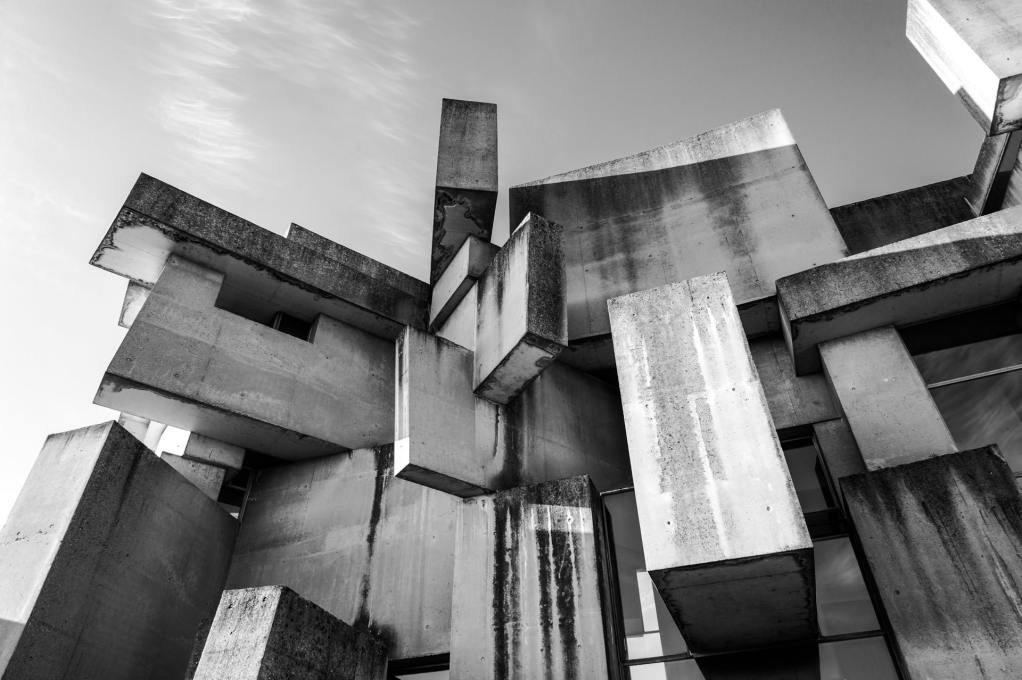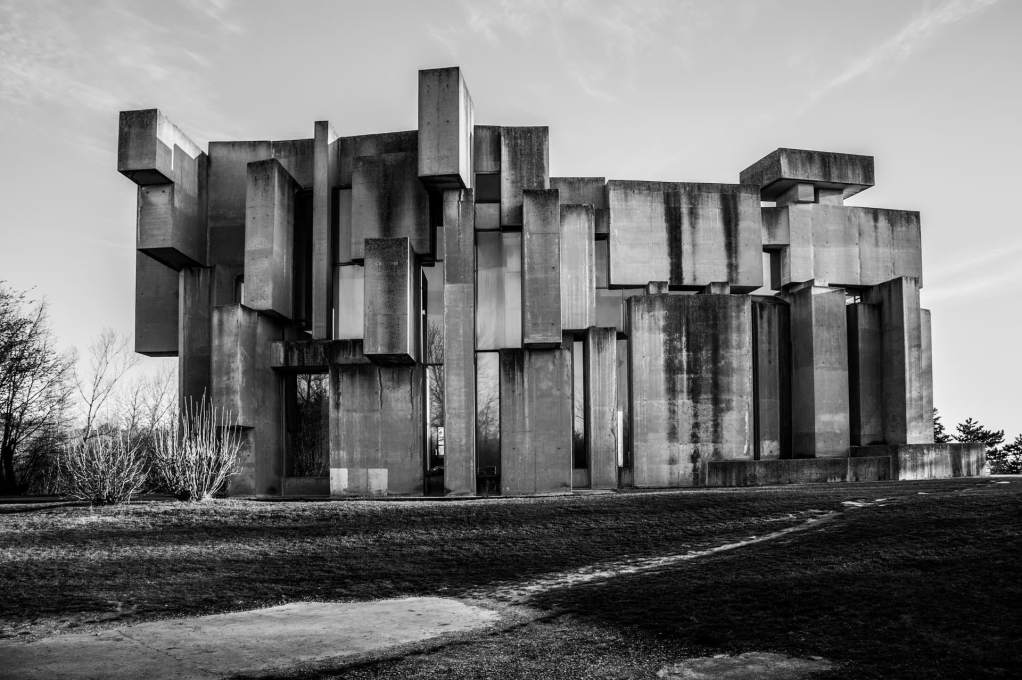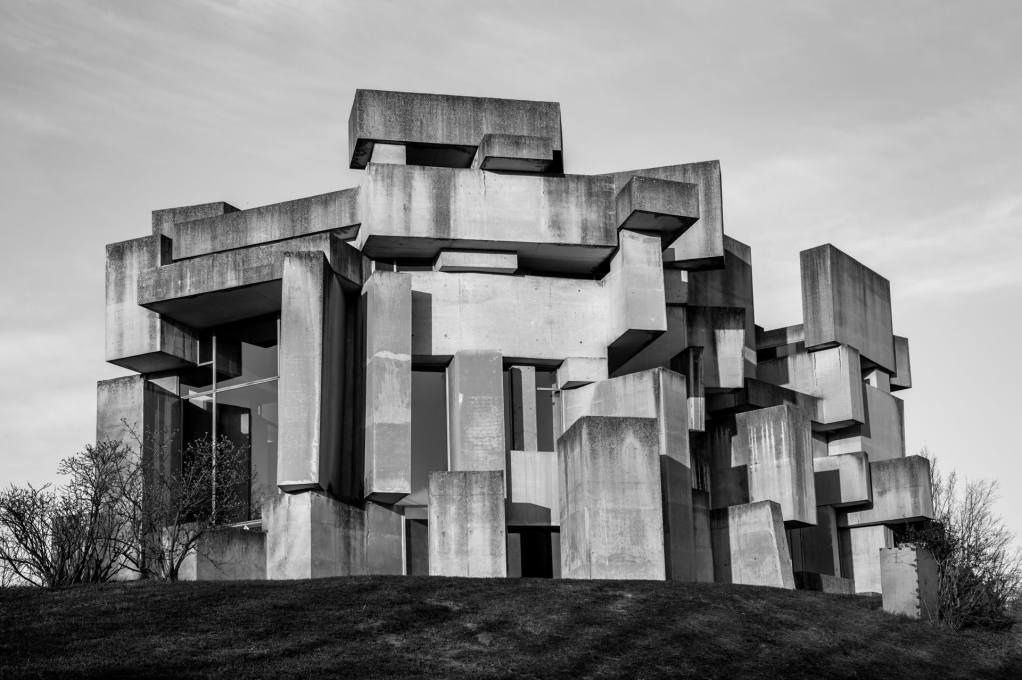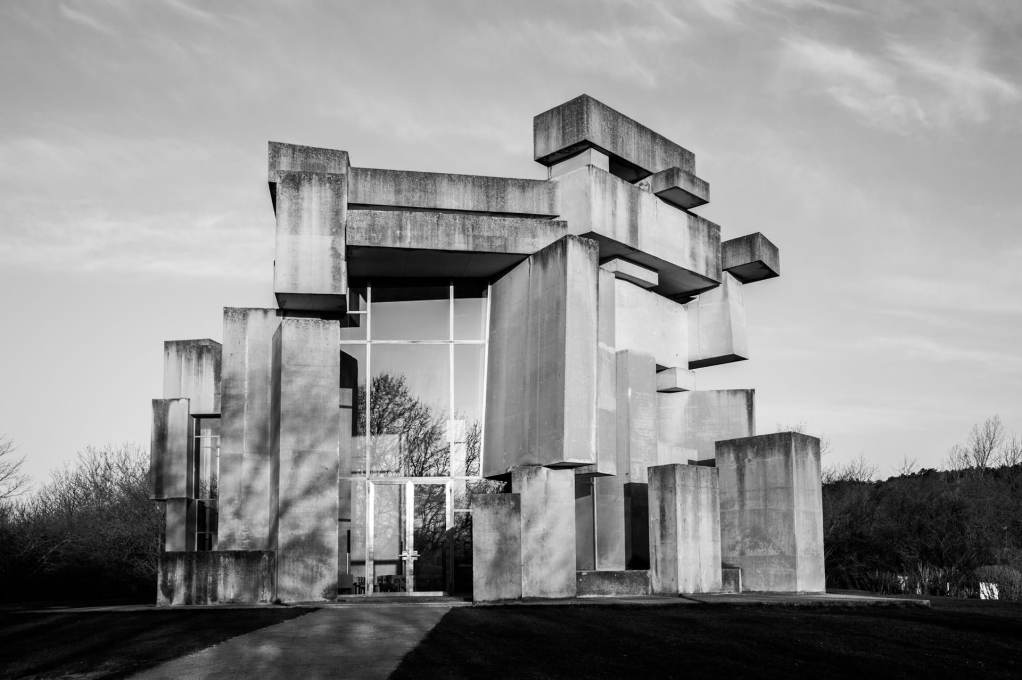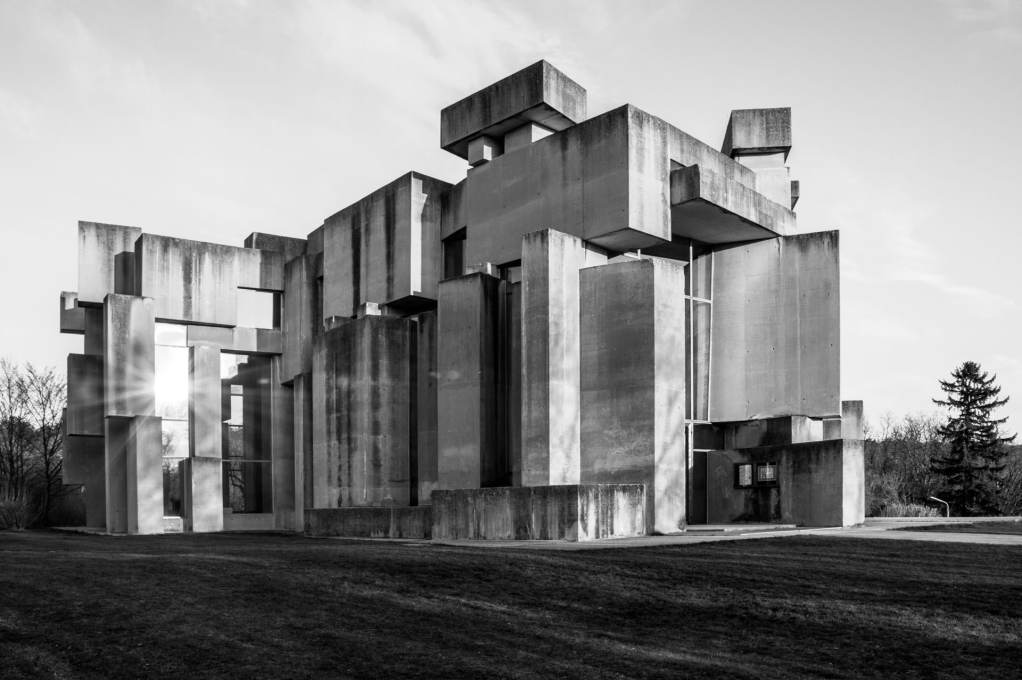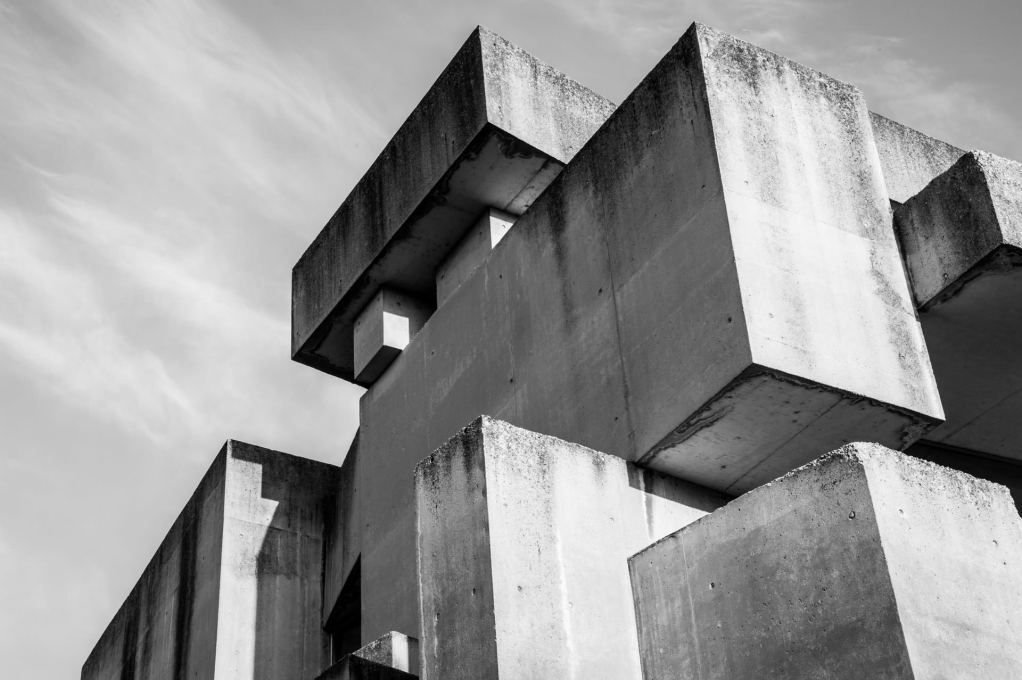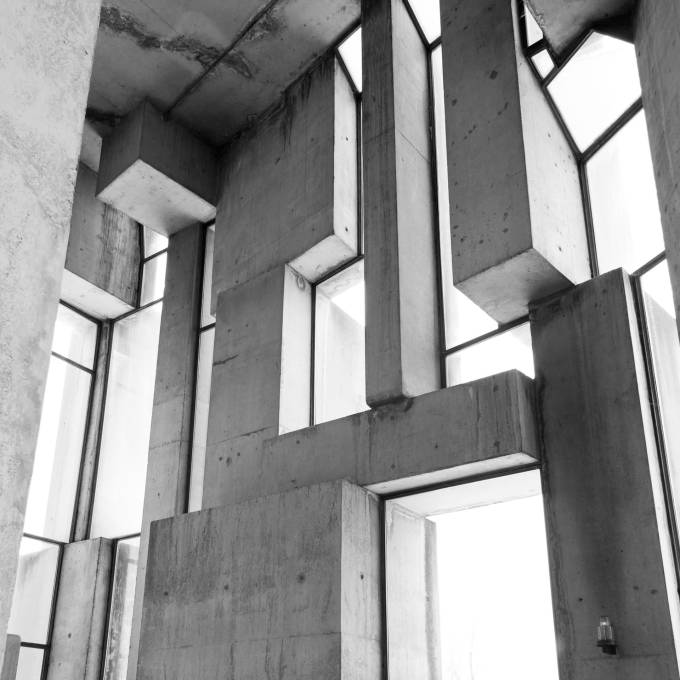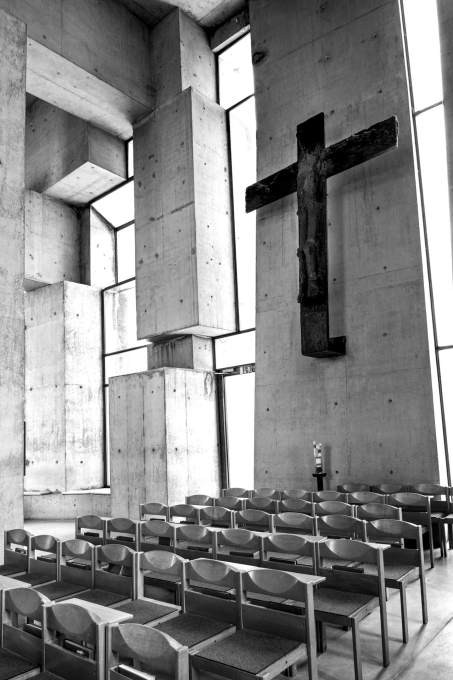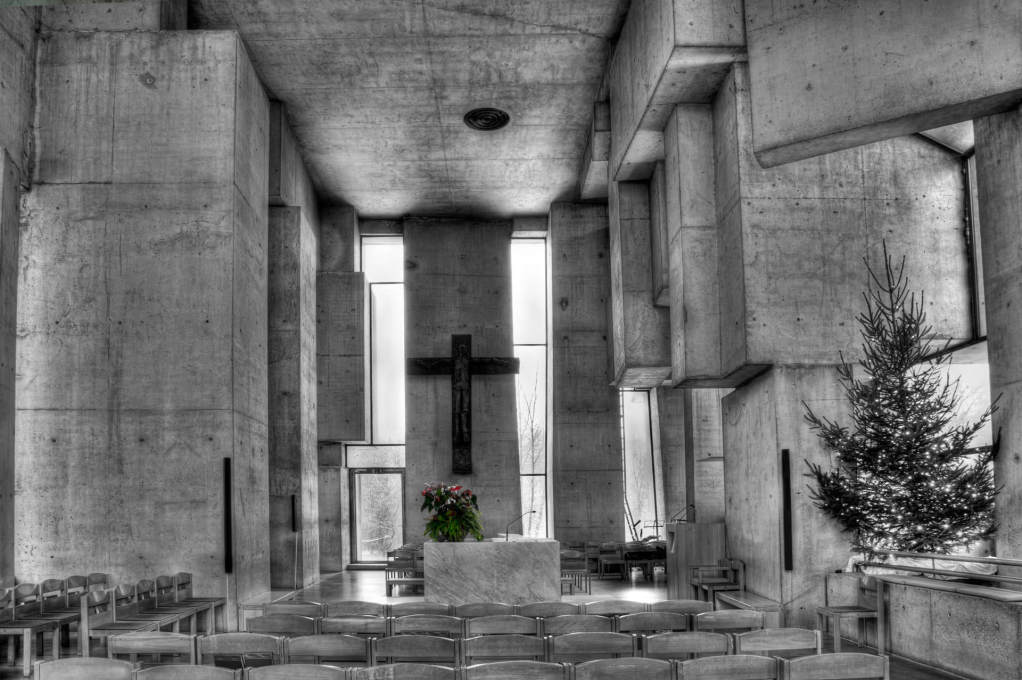Architect, urbanist and uncube correspondent Jason Hilgefort waxes lyrical about one of his favourite Viennese buildings: a stunning church designed by sculptor Fritz Wotruba.
The Church of the Most Holy Trinity or Wotruba Church, as it is better known, was designed by the sculptor Fritz Wotruba (1907-1975) and lies in the 23rd district of Vienna. It was conceived in 1964, but not completed until after his death in 1976, with Fritz G. Mayr being the architect of record.
It is interesting to know that the design was conceived before the site was selected. This is of note because the site adds so much to the power of the piece. This seemingly random stack of 152 concrete elements stands simultaneously in harmony and in contrast with its context. The architecture holds a sense of contradiction because the site is on the very edge of Vienna, on a hill, with a commanding view back to the city, surrounded by trees and the subtle sounds of rustling leaves – yet the structure is composed of rough formed concrete elements. Nevertheless the looseness of the composition of traditionally urban concrete materiality allows the church to seem at home within its more rustic surroundings.
Perhaps even more intriguing is that, according to Wotruba, the project was inspired by the French Gothic masterpiece that is Chartres Cathedral in France. One can certainly feel the ambition and attempt at grandeur, however his church at times seems to stand for very different values. In many ways, one feels the reality of the design process in viewing the building. It gives a strong impression to the visitor of being able to walk into an oversized sculpture, which is logical considering Wotruba’s profession. Its detailing and massing reveal awkward moments that were clearly not the focus of the project. And, in contrast to Chartres, the interior space is doused in light, giving the visitor a very different relationship with its exterior and towards a higher power. Further, the interior is simply furnished, with the one signature element being the finely crafted cross. This gesture keeps the focus on the exterior of the building construction as well as providing another hint towards the hand of the sculptor.
The ambition of Wotruba to “design something that shows that poverty does not have to be ugly, that renunciation may be in an environment that is beautiful despite the greatest simplicity and makes you happy” is a beautiful goal. But perhaps something else can be taken away from the project and its process that also speaks to the current state of architecture. Instead of the profession’s recent trend towards the introspective, protectionist and self-referential, the Wotruba Church reminds that being more open and collaborative with those “outside of the profession” can bring something greater to the profession as a whole. Architecture is not merely for architects. Nor does it need to be conceived solely by architects.
– Jason Hilgefort




